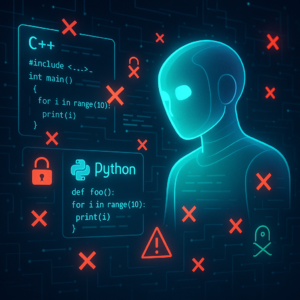Advancing LLM detection in the ALTA 2024 Shared Task: Techniques and Analysis

Decoding AI: Exploring Advances in LLM Detection Techniques
In the world of digital content creation, the emergence of AI-generated text has revolutionized how information is produced and consumed. Yet, this progression presents a new challenge: How do we differentiate between content crafted by humans and that generated by artificial intelligences, such as ChatGPT? The researchers at ALTA 2024 have delved into this question with their shared task—”Advancing LLM Detection.” Led by Dima Galat, the recent study explores innovative techniques to enhance our detection capabilities of AI-generated content. So, let’s unravel the study’s insights and why they matter in today’s digital landscape.
A Deep Dive into AI-Generated Content
The Growing Concern
As AI technologies advance, the distinction between human-written and machine-composed text becomes increasingly blurred. This phenomenon has sparked urgent interest in developing reliable detection methods. Consider the implications: educational institutions need to ensure essay authenticity, while social media platforms strive to combat misinformation. Understanding the workings of AI language models is imperative to tackling these challenges.
Why Focus on Sentence-Level Evaluation?
The uniqueness of this study lies in its focus on sentence-level analysis within hybrid articles. Why sentence-level? Simply put, dissecting text into its individual components allows for a more precise evaluation of patterns and anomalies that might be characteristic of AI outputs. This granularity offers a clearer lens through which AI-generated content can be scrutinized.
Unveiling ChatGPT-3.5 Turbo’s DNA: Distinct Probability Patterns
Dima Galat and his team have shed light on the distinct, repetitive probability patterns evident in the output of models like ChatGPT-3.5 Turbo. Imagine a symphony orchestra where each instrument follows a predictable sequence; similarly, AI-generated text often adheres to patterns that, while subtle to a casual reader, stand out under detailed examination.
The Role of Probability Patterns
These probability patterns form the backbone of the study’s detection model. The researchers discovered that ChatGPT-3.5 Turbo’s textual output maintains consistent, domain-specific patterns that can be exploited for detection. This highlights a unique fingerprint intrinsic to AI-generated content, distinguishing it from the nuanced and varied probabilities found in human writing.
The Resilience of Detection Against Textual Modifications
One of the study’s pivotal revelations is the robustness of detection mechanisms against minor textual modifications. You might think that simple rewording of sentences could slip under the radar of detection models. However, empirical tests demonstrate that subtle changes surprisingly have minimal impact on detection accuracy. This emphasizes the effectiveness of focusing on probability patterns over superficial textual changes.
What Does This Mean Practically?
For practitioners, educators, and developers, this finding is monumental. It suggests that AI detection systems can remain effective despite attempts to disguise AI-generated content through minor edits, thus holding substantial promise for real-world applications.
Navigating Toward Robust Detection Solutions
Armed with empirical insights, the pathway to developing advanced AI detection solutions becomes clearer. The study offers a valuable road map for future methodologies tasked with identifying synthetic text. By emphasizing probability patterns and sentence-level analysis, researchers can build more resilient, adaptive detection systems.
Envisioning Future Applications
Imagine a future where academic integrity is preserved with AI detectors that ensure essays and research papers are authentically human-crafted. Or think about safeguarding your media consumption, where news platforms utilize sophisticated filters to distinguish genuine reportage from AI spin. The implications stretch far and wide across numerous fields.
Key Takeaways
- Sentence-Level Analysis: Offers a granular approach vital for detecting AI-generated patterns.
- Distinct AI Probability Patterns: ChatGPT-3.5 Turbo showcases repetitive probability sequences, aiding detection.
- Resilient Against Modifications: Minor rewording doesn’t significantly affect detection accuracy.
- Practical Implications: Holds promise for applications in education, media, and content regulation.
- A Way Forward: Leveraging these insights, future research can develop robust AI detection solutions.
Closing Thoughts
The research spearheaded by Dima Galat takes us one step closer to effectively identifying and managing AI-generated content. As we continue to integrate AI into various domains, understanding and implementing reliable detection techniques will be crucial. With their insights, detection methods can evolve to meet the growing complexities of a world where machines generate an increasing portion of our written landscape. So, next time you’re reading an article or browsing through a feed, remember: behind some content lies a meticulous blend of patterns that, thanks to studies like this, we are learning to decipher better each day.




